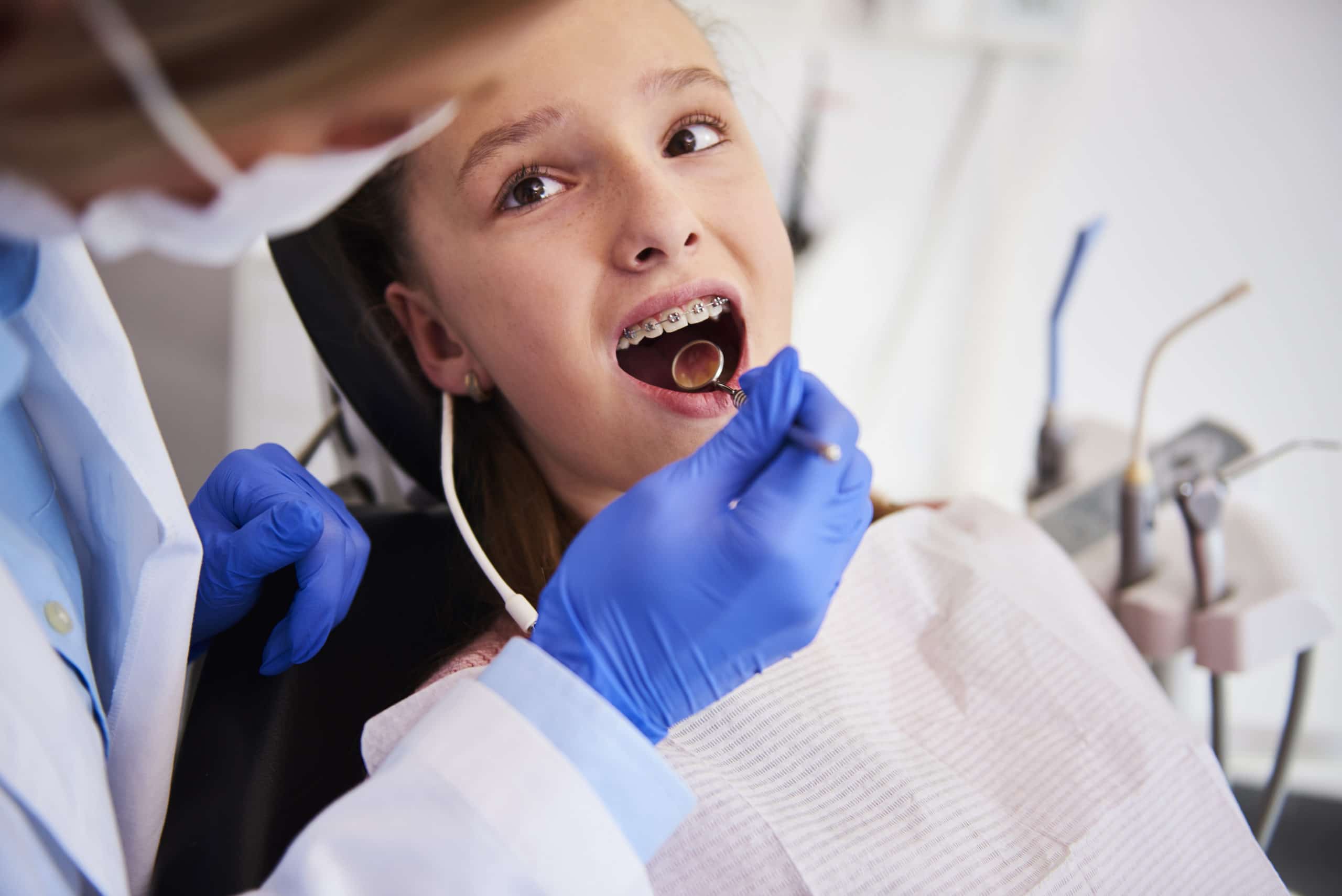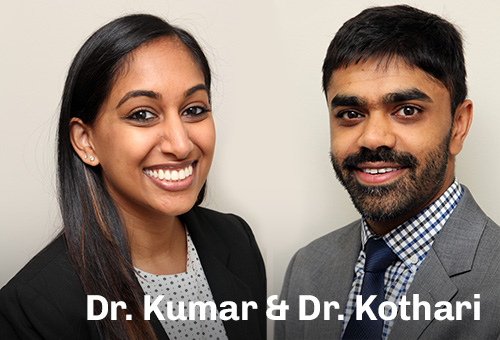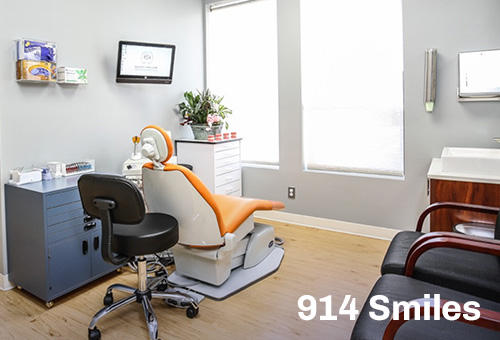
Let’s Define What is a Crossbite
Certified specialists in orthodontics, like our Tarrytown orthodontist, Dr. Rishi Kothari, are experts in diagnosing, preventing and treating malocclusion. What is malocclusion? It’s the technical term for a “bad bite.” It means the upper and lower teeth don’t come together properly, whether due to the size or position of the teeth or the jaw. There are multiple types of malocclusion, one of which is a crossbite.
In this post, the team at 914 Smiles will cover:
What is a Crossbite?
First things first, what is a crossbite? A crossbite is when some of the top teeth sit inside some of the bottom teeth when the mouth is closed. It can involve one tooth or a group of teeth and it can occur in the front or the back of the mouth.
It can be a little confusing because an underbite is also characterized by the top teeth being positioned behind the bottom teeth. How is a crossbite different from an underbite? While the two issues seem similar, with a crossbite, one or several bottom teeth sit in front of the top teeth when the jaw is closed, but the entire jaw isn’t affected. With an underbite, which is usually more severe, the lower teeth and entire lower jaw are in front of the upper teeth.
What are the Different Types of Crossbites?
There are two types of crossbites:
- Anterior Crossbite
An anterior crossbite, or front crossbite, is when the front teeth are in crossbite. One or more of the top front teeth bite behind the bottom front teeth.
- Posterior Crossbite
A patient has a posterior crossbite, or back crossbite, if teeth towards the back of the mouth are affected. Again, one or more of the bottom teeth will sit outside of the top teeth when the mouth is closed.
What are the Causes of a Crossbite?
A crossbite can be caused by:
- Genetics
As with any type of misalignment of the jaw or teeth, crossbites often run in families. A crossbite is commonly the result of a narrow upper jaw or palate, which is determined by genetics.
- Delayed Loss of Baby Teeth
Sometimes, baby teeth that have started to get wiggly tighten back up in the gums (over-retained teeth). When a baby tooth, or primary tooth, doesn’t fall out on time, it prevents the permanent tooth below it from erupting. When the permanent tooth does finally come in, it can lead to a crossbite. Extracting the delayed primary tooth may be necessary to prevent the crossbite from occurring.
- Mouth Breathing
This might come as a surprise but mouth breathing, which typically occurs during sleep, can interfere with facial growth in kids. If your little one already has a narrow upper jaw, mouth breathing will make it even more likely that they’ll develop a crossbite.
- Oral Habits
Oral habits like thumb sucking, finger sucking, prolonged pacifier use and swallowing in an abnormal way (i.e., reverse swallow, known as tongue thrust) can create a crossbite. These habits put pressure on the teeth and palate, potentially causing the teeth to shift out of place and bone to become distorted.
Why Does a Crossbite Need to be Fixed?
Treating a crossbite is important because if not addressed, it can lead to:
- Difficulty biting and chewing
- Cracks or chips in the teeth
- Uneven and excessive wear of tooth enamel
- Jaw pain and headaches
- TMJ dysfunction
- Increased risk of tooth decay and gum disease
- Gum recession due to the way the teeth hit, which makes gums and tooth roots more susceptible to infection
- Uneven jaw growth, because patients often compensate by shifting their jaw to one side
How to Fix a Crossbite?
When it comes to how to fix a crossbite, the first step is visiting an orthodontist. At your consultation, Dr. Kothari starts by completing a thorough exam and taking diagnostic records in order to determine an accurate diagnosis. If he does find that you have a crossbite, he’ll create a personalized treatment plan to align your teeth and jaw.
For some cases of moderate to severe crossbites, especially when they’re related to the size of the upper jaw, early orthodontic treatment could be extremely beneficial. With early orthodontic treatment, or phase 1 orthodontic treatment, Dr. Kothari uses certain orthodontic appliances to guide jaw growth while a child is still developing and has primary teeth.
When phase 1 is complete, your child will have a rest period until their permanent teeth erupt. They’ll then get braces or Invisalign® Teen to ensure the permanent teeth are straight and the bite is aligned. Early intervention can help kids avoid the need for jaw surgery or extractions down the road and makes the second phase of treatment much shorter and easier. This is the main reason why the American Association of Orthodontists recommends kids have their first orthodontic evaluation by age 7!
Depending on your age and the severity of the problem, crossbite treatment could involve:
- Palate Expander
A palate expander, or rapid palatal expander (RPE), is an orthodontic appliance that widens, or expands, the upper jaw. It helps the bones in the palate move apart. Once the desired amount of expansion has occurred, the palatal expander stays in for a little while longer to allow new bone to form to stabilize the expansion. A palate expander is usually used for kids and teenagers who are still growing in order to correct a posterior crossbite. It’s not as effective in adults, whose bones are fully developed and have hardened.
- Braces
If you have a crossbite, braces can be effective. For a single-tooth crossbite, braces alone may be enough to fix the problem. However, for a crossbite that involves multiple teeth, we might pair braces with auxiliaries like rubber bands. While braces straighten the teeth in each arch independently, rubber bands connect the upper and lower arches and offer the connective force needed to simultaneously align the bite.
- Clear Aligners
Can Invisalign fix a crossbite? Will 914 Aligners help a crossbite? Yes, clear aligners like our own in-house 914 aligners, 3M™ Clarity™ Aligners and Invisalign can fix a crossbite in many cases. Clear aligners are especially helpful for a single-tooth crossbite. Since Clarity, 914 and Invisalign® aligners cover the biting surfaces of the upper and lower teeth, they help the misaligned tooth move freely without the opposing teeth interfering.
However, for a more significant crossbite, clear aligners may need to be paired with attachments, which are composite buttons that are bonded to the teeth, and/or elastics. The attachments provide something for the aligners to push off in order to achieve more complex tooth movements and the elastics, which are just like braces rubber bands, offer connective forces to bring the upper and lower jaw together properly.
- Surgical Orthodontics
In rare cases, when an adult has a severe crossbite, surgical orthodontics could be the best option. This is where we combine orthodontic treatment with corrective jaw surgery, known as orthognathic surgery. Thanks to advances in technology and treatments, we can treat more crossbites than ever before without surgery. But, occasionally, jaw surgery is the only way to get dramatic, stable results in adults who are done growing.
Key Takeaways:
- A crossbite is when some of the top teeth sit in front of some of the bottom teeth when the jaw is closed.
- A patient can have an anterior crossbite (teeth in the front are affected) or a posterior crossbite (teeth in the back are affected). A crossbite can involve one tooth or a group of teeth.
- The most common cause of a crossbite is genetics, however, mouth breathing, the delayed loss of baby teeth and oral habits like tongue thrust and thumb sucking can also be behind this type of malocclusion.
- If not treated, crossbites can cause a host of complications, including difficulty biting and chewing, issues with jaw growth, TMJ dysfunction and more.
- A certified specialist in orthodontics can create a personalized treatment plan to fix a crossbite. Depending on your age and the severity of the problem, treatment options could include braces, clear aligners, a palate expander or, in rare cases, corrective jaw surgery.
Expert Crossbite Treatment in Tarrytown, NY
If you suspect you or your child has a crossbite or other type of malocclusion, schedule a complimentary consultation at 914 Smiles today. Dr. Kothari is an expert in diagnosing and treating a wide range of orthodontic concerns. At our high-tech practice, we use modern treatment options to help you get outstanding results more comfortably and efficiently.
Or, if you’re worried your younger child will develop a crossbite because of the delayed loss of baby teeth, thumb sucking, tongue thrust or mouth breathing, we can help with that too! Schedule a visit with our Tarrytown pediatric dentist, Dr. Reshma Kumar. She can evaluate your child’s primary teeth and give you guidance on how to stop oral habits.



